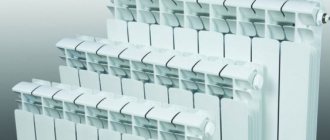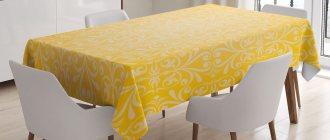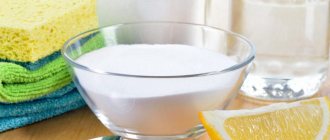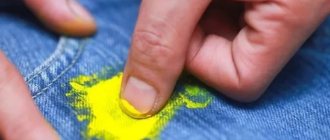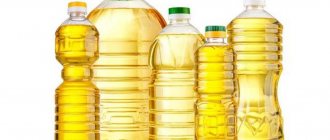An ordinary frying pan is the most in-demand item in any kitchen at home. Every housewife wants to preserve the original appearance of the dishes for as long as possible. However, cooking in a frying pan involves the use of various oils and fats, which leads to the formation of soot, which spoils the whole picture. There are many chemical and natural products for cleaning dishes from grease and carbon deposits. The main thing is to choose the right one. Very often, a composition suitable for cleaning a cast iron frying pan is strictly prohibited for cleaning Teflon or ceramic cookware.
Any housewife sooner or later faces the problem of removing carbon deposits from kitchen utensils.
How to remove soot from hazelnuts
Every housewife probably has “grandmother’s” cast iron cookware stored somewhere in the kitchen!
The cast iron that you can buy now cannot be compared with the quality that was before. But how to cook delicious dishes when the dishes are covered with an unwashable burnt layer of fat? And is it possible to give your favorite saucepan a second life? There is an exit! This method will make your old favorite dishes look like new! For this tip, I had to find a typical example of an old cast iron frying pan with a fairly decent layer of burnt fat on its walls.
So, to begin with, we will need the simplest at first glance available means, and these are: 1) universal PVA glue (regular medium jar, I have 125 g) 1 pc 2) laundry soap 72% 1 pc
So, first, grate the laundry soap on a coarse grater.
I pour water into a large container (in my case, a large deep basin) and bring it almost to a boil. At this point, I reduce the heat and pour grated soap and PVA glue into the basin. I mix everything thoroughly so that the soap dissolves. I dip the frying pan, “killed” over the years, into the resulting solution.
I. don’t be alarmed. I cook it for 2 hours over medium heat, adding water when part of the solution evaporates.
. During the entire time of this work I had the hood turned on. This in no way means that there will be a strong smell! There is a child in the apartment, so, as they say, out of harm’s way.
After 2 hours, I drained all the solution and cooled the pan itself a little under running water.
I would like to draw your attention to the fact that this solution makes the fat itself very soft. In some places it began to crumble on its own. I brought it to perfect shine by regular cleaning with a metal sponge. The process itself took me about 30-40 minutes.
Believe me, this method is the most effective and simple, and most importantly not expensive!
And here is the result - the dishes sparkle and beg to be cooked in them!
Remove the deposits, you cannot have mercy!
We all love to eat delicious food - this is an indisputable truth. The same truth is our dislike of washing dishes after a meal. Especially outside. As a result, we live by the principle “eat the fish and don’t wash the frying pan” ???? But carbon deposits can be the main cause of stomach cancer. Due to the high content of benzspirenes (cancer-causing carcinogens), sticky smoke is quite dangerous. Let's look together at what soot actually is.
Burnt fat plus metal scale looks like a black sponge under a microscope. This “sponge” is a wonderful home for various bacteria and their metabolic products.
This “living dirt” is always present on uncleaned pans between cooking sessions. Carcinogens, bacteria, scale and oxides of various metals are a perfect cocktail for the slow destruction of our health.
How to easily clean a waffle iron?
If we are talking about an old cast iron waffle iron for baking waffles on a regular stove, which you inherited from your mother, then you can use the same cleaning methods for it as for old frying pans. After all, a waffle iron consists of two frying pans with handles connected to each other. We place the waffle dough on one of them, and press it on top with the other. Then bake the dough on the stove, turning the waffle iron over to one side or the other. Cleaning this waffle iron is as easy as shelling pears. Just stick it in a container of water and wait an hour or two.
You should care for such a waffle iron in the same way as a regular frying pan made of the same material, that is, clean and wash it following the manufacturer’s recommendations after each use of the utensil. If you do this constantly, then carbon deposits on the waffle iron will not accumulate. But if time is lost, and carbon deposits still accumulate, then a problem arises: how to return the product to its original appearance and a clean inner working surface suitable for baking.
With a thick layer of soot and fat, this is not at all easy to do. We'll have to work hard.
Of course, it’s easier to get rid of carbon deposits using industrial chemicals, which you can always buy in a store. But, despite the fact that they are able to quickly dissolve old fat, they should not be used in this case. Harmful inorganic acids and chemicals, which are necessarily included in these products, will not be completely washed off from the inner surface of the waffle iron, no matter how hard you try. Because of this, the remains of harmful “chemicals” enter our body with food and, like a time bomb, gradually poison it.
Mechanical cleaning methods
The oldest one in existence and without chemistry. In ancient times, metal utensils were cleaned with sand and water. Today this can easily be replaced by sandblasting .
A frying pan, even with the most terrible long-term carbon deposits, can be easily cleaned in this way. If you don’t know what it is, any auto mechanic will be happy to explain. This installation uses sand and compressed air to clean any layer of rust or paint in a matter of minutes. Almost any tire shop will quickly clean your cast iron frying pan for an inexpensive price.
But this method has a significant disadvantage. Yes, you can sandblast everything. Only in this way will the original surface of the cast iron be damaged.
The soot can also be easily cleaned with a grinder . In this case, ask your husband for help???? Just tell him that the tool requires a flap end circle. In this way, a large frying pan with a thick layer of carbon deposits will be cleaned in 5 minutes. And your husband will be shocked that you know such instrumental terms????
Cleaning with rubber-based metal brushes Such a brush can be found in a hypermarket, household and building materials store. But this is a more labor-intensive procedure.
Traditional methods of cleaning
For kitchen utensils, including waffle irons, use other environmentally friendly methods for removing carbon deposits. I propose to remember the folk methods that our grandmothers used. Suitable for cleaning dishes from carbon deposits:
- Soda (baking soda or ash) - perfectly cleans and softens any hardening on dishes.
- Vinegar and citric acid - whiten stains, eliminate unpleasant odors, and fight grease.
- Dry mustard – perfectly degreases and cleans the surface of dishes.
- You can also use natural-based laundry soap and stationery (silicate) glue. They are also often components of cleaning products made according to folk recipes.
The following method of getting rid of carbon deposits is widely practiced: take a container large enough to place a waffle iron or other kitchen items that require cleaning from carbon deposits (frying pans, frying pans, baking dishes, etc.) Fill with water to cover all items fully. Add a generous handful of soda and a bottle or two of silicate glue to the water.
There are also recipes that use laundry soap. All this should simmer over low heat. The boiling time depends on the age of the deposits and the thickness of the carbon layer. It may take several hours. During this procedure, turn on the hood or open a window, since when the solution boils, vapors with a heavy, unpleasant odor will be released. I'm sure many people don't like this method anymore.
But that is not all. If there is a lot of soot, it will not dissolve completely, but will only soften. Even after boiling for a long time, it will take additional effort to completely remove the black layer of smoke from the dishes. Moreover, you can only use steel wool or a knife to clean the outside and sides of the waffle iron.
And its inner surface cannot be scratched. Here you need to work with a not very hard brush. For example, a soft toothbrush works well to clean a tartan or honeycomb countertop. This work is painstaking and time-consuming.
If you don't have the patience for such a job, part with your old, antediluvian waffle iron. Buy yourself a new, modern electric waffle iron.
Traditional methods against soot in a frying pan
At home, you can use improvised means that are always available in the kitchen. They safely allow you to clean the inside of the frying pan from carbon deposits.
The prepared table will help determine contraindications for using a particular cleaning product for a specific type of frying pan.
Citric acid, vinegar and washing powder
The method involves use with different approaches.
- When the deposits on the dishes are fresh enough, lemon will do its job perfectly. To do this, you need to place the frying pan in the solution (for 1 liter of water - 1 tablespoon of citric acid). Boil for 20-30 minutes. Rinse with warm water.
- You can add vinegar to the prepared solution. Boil the frying pan in this water for 10-15 minutes. Turn off the heat and clean the dishes with a sponge after 2 hours. Then you can add washing powder to the same composition, bring to a boil, and leave for another 1 hour. Rinse with warm water.
- If there are damages and scratches on the frying pan, it is better not to boil the dishes. After each time of use, it is enough to wipe with a sponge soaked in a weak solution of acetic acid.
Important! The method cannot be used to clean aluminum pans, as well as dishes with damaged coating.
Coca Cola
The carbonated drink has long established itself as an excellent means for cleaning pots and pans. Just pour Coca-Cola into a bowl, bring to a boil and after 15 minutes turn off the stove. Leave it like this until it cools completely.
Important! The method is ideal for cleaning cast iron and stainless steel cookware.
Mustard powder
In Soviet times, mustard was valued as the most effective means of removing fat. To do this, a frying pan or saucepan was heated over a fire. They covered the bottom with mustard powder and scrubbed it off. After 20 minutes, wash off with water.
If it was not possible to wash it the first time, then the dishes were soaked in mustard solution for 40 minutes. Then washed again.
Cleaning and boiling in salt solution
Cleaning with salt is suitable for almost any dishware.
- Salt is poured onto the bottom of the frying pan (can be used together with sand).
- Lightly moisten and let stand for at least 2 hours. Sponge.
- If this does not help, you must immediately add water and boil. Perhaps this option will be more effective.
For your information! Do not apply to Teflon and ceramic cookware.
Using hydrogen peroxide, baking soda or soda ash
- Baking soda will help clean the pan from years of carbon deposits. Place a frying pan in a container with boiling water and soda. Reduce the heat to low and leave for 30 minutes. Then turn it off. Let it sit for another half hour. The dishes are washed with warm water.
- If this method does not help, add hydrogen peroxide and a few drops of dishwashing detergent to the soda solution. Leave for another 30-45 minutes. Rinse thoroughly with water several times. The method is actively used for cleaning non-stick frying pans.
Another option (always effective) is when glue and soap are added to the soda solution (see recipe above).
Ammonia and borax for cleaning cast iron surfaces
If food is badly burnt, the prepared solution will help to cope with the soot.
- For 300 ml of water, take ammonia and 12 g of borax.
- This mixture is poured onto the burnt surface.
- After 1 hour, the liquid is drained, the carbon deposits should easily come away from the surface.
- Kitchen utensils are washed and wiped.
Caring for your electric waffle iron
Many models of electric waffle irons have non-stick coating on the working surfaces. With proper care of the device, carbon deposits have no chance. Simply, after using the device, sweep away all the crumbs with a soft brush and wipe the warm surface with a paper towel or napkin that absorbs grease. Soften any stuck dough with vegetable oil.
If the working surfaces are removable, cleaning the device is even easier. Remove them, rinse with water, wipe dry and return to their place.
If you do not follow these rules on time, you risk again making yourself a problem with cleaning out old fat. And an electric appliance, unlike an old ordinary waffle iron, cannot be put into water and boiled (I hope this is clear to everyone).
True, you can partially apply a self-made paste from the above-mentioned folk remedies to hard-to-remove areas. Then carefully clean the problem area with a soft brush or cloth.
How to clean the working surface of the device is always indicated in the instruction manual. It is unwise to ignore this important information. After all, there are both general recommendations and specific ones specifically for your waffle iron.
We use cheap chemicals
Simple ingredients: vinegar + soda + fine salt + citric acid and you can remove carbon deposits from a cast iron frying pan. You also need a steel basin of a suitable size to accommodate your utensils. Pour enough water into the basin to cover the vessel underneath.
Pour 1 cup of vinegar and 0.5 cup of citric acid into a saucepan with 2 liters of cold water. Place the pan on heat and let the mixture boil. Make a small fire under it. About 15 minutes will pass and the plaque will begin to recede. Pull out the dishes and clean the deposits using what is convenient. The task is to remove a little of the top layer so that the vinegar can penetrate deeper.
Place the utensils back into the pan. You can add 2 more tbsp. l. soda, let it simmer on the stove for 15 or 20 minutes. Take out the dishes, wash them in hot water and remove the softened coating with a steel sponge. If not everything is removed the first time, then repeat the procedure. Don't forget to use gloves.
Need to clean a burnt metal pan? To remove, use baking soda + salt. The pan needs to be warmed up a little and rinsed under running water. Sprinkle the area you are going to clean with salt or soda. Let it stand upside down for 1 hour over the burner that is losing heat. The coating on the outside will soften and remove. This method is good for those who cannot tolerate the smell of vinegar.
How to clean a frying pan from carbon deposits: 25 best ways
A frying pan is the most popular kitchen item; every housewife wants to preserve its original appearance for as long as possible.
But since the frying pan is used with various oils and fats, carbon deposits form over time, which is not an easy task to get rid of. Experienced housewives resort to both chemical and folk remedies. In our publication, we will share with you proven ways to clean a frying pan from carbon deposits at home.
How to heat a frying pan after cleaning or before first use?
By cleaning the frying pan from carbon deposits and grease, you will also remove its natural non-stick film, which protects food from burning. This applies to all types of frying pans, except for stainless steel frying pans (they are not subject to corrosion). Calcination is especially necessary for cast iron frying pans and cauldrons. To create a non-stick layer after general cleaning or before first use, you need to bake the pan. Here are a few methods to choose from.
For a cast iron frying pan or cauldron, as well as a frying pan made of white or blue steel (except for stainless steel utensils)
Before calcining, make sure that the frying pan has not been washed with an aggressive cleaning agent. It is best to wash the frying pan with laundry soap or dishwashing liquid before this procedure.
Method 1. How to heat a frying pan in the oven (for cast iron and steel utensils):
- Preheat the oven to 180-200 degrees;
- While the oven is heating up, completely (!) rub a clean and dry frying pan/cauldron with vegetable oil using a paper napkin or cloth;
- Turn the pan upside down, place it in the oven on a rack and leave for 1 hour;
- After the set time has passed, allow the pan to cool naturally without removing it from the oven.
Method 2. How to heat a frying pan with oil and salt on the stove (professional cook method):
- Fill the bottom of the frying pan with a 1 cm thick layer of vegetable oil. Next, add coarse sea salt - there should be enough of it so that it absorbs almost all the oil.
- Place the frying pan over medium heat and cook until the salt darkens (about 20-30 minutes).
- Turn off the heat, let the pan cool, then remove the salt and rub the remaining oil into the bottom and sides of the pan.
General information
Cast-iron pan
It is on the surface of cast iron frying pans that a thick layer of soot accumulates, which is almost impossible to remove using conventional detergents. In this case, aggressive cleaning agents are used, which can be harmful to health, since most of these products are toxic.
Therefore, they can only be used by observing the following safety rules:
— open the window and turn on the hood;
- wear strong rubber gloves;
- rinse the dishes thoroughly under running water;
- if you cleaned the frying pan from the inside, you can boil a small amount of water in it, and then rinse thoroughly again under running water to completely remove any chemical residue.
One of the most effective means is sewer pipe cleaning liquid. Directions for use: Add 0.5 liters of liquid to five liters of water.
Important: add the reagent to the water, not vice versa, otherwise a violent chemical reaction will occur.
You should work with this solution wearing thick rubber gloves; soak the frying pan in the resulting solution. Soaking time depends on the degree of contamination.
Aluminum frying pan
“Shumanit” is ideal for cleaning aluminum frying pans. Available in the form of a liquid, gel or cream, it can cope even with many years of grease and carbon deposits. The downside of this product is toxicity. Therefore, use only if certain rules are observed, including necessarily ventilating the room, working with rubber gloves and strictly following the operating instructions.
Non-stick frying pan
Modern frying pans have three types of non-stick coating: Teflon, marble and ceramic. Therefore, they do not require a large amount of fat or oil when cooking with them. This makes cleaning them very easy, just use a few drops of detergent.
Tips and tricks for properly cleaning an old Dutch oven
The above-mentioned “Shumanit” will help to clean an old fryer. It is necessary to apply the product for 10-20 minutes and then rinse off.
If the fryer is electric, the cleaning process becomes more difficult. This item cannot be washed with water. This is where regular vegetable oil comes to the rescue. It is necessary to wipe the fryer generously with a cotton swab dipped in warm vegetable oil. After which it needs to be closed and left for a couple of hours. During this time, the oil should soften the soot layer. If the hardened layer has softened, it must be removed using napkins, wiping it dry.
The components of Schumanite are quite aggressive, so all work should be carried out with rubber gloves.
You can clean the grates in exactly the same way: using only oil and wipes.
Under no circumstances should you clean the grates with harsh cleaning agents, or heat them over a fire, as this can damage the special protective layer.
You can also soak them in warm water with the addition of baking soda and dishwashing detergent.
Effective ways to remove carbon deposits and grease
Method No. 1. Laundry soap + PVA glue.
Grate ¼ of the laundry soap and place the resulting soap shavings in the frying pan. Add PVA glue and a small amount of water, place the pan on the stove and simmer for 30 minutes. Remove the frying pan from the stove and leave to cool, then pour out the cooled liquid, rub the frying pan thoroughly with a sponge and wash under running water.
To clean a cast iron frying pan, mix vinegar with water in a ratio of 1:3, pour the resulting solution into the frying pan and boil for 15 minutes. During this time, make sure that the water does not completely boil away, add little by little. After 15 minutes, turn off the stove and leave the pan to cool. Then pour out this solution, wash the dishes using a special product and a little soda, which completely neutralizes the smell of vinegar.
Method No. 3. Laundry soap.
You can deal with carbon deposits on the inside of the frying pan using ordinary laundry soap. The huge advantage of this product is that it is harmless and suitable for all types of pans.
Grate 1/3 of the laundry soap, place in a frying pan and add water. Place on the stove and bring to a boil over low heat, then turn off the heat, cover the pan with a lid and set aside. A hot soapy solution will remove all burnt marks, drain the cooled liquid and wash the pan in the traditional way.
This method is suitable for removing burnt marks from the outside; to do this, pour the solution into a boiling container and place it in the frying pan. All other actions are similar.
Method No. 4. Carbonated drink.
Fill the pan with soda, place on the stove and boil for 30-35 minutes, then rinse with running water. To get rid of carbon deposits from the outside, pour enough soda into a container to immerse the entire frying pan in it, then the whole procedure is done in the same order.
It is best to use this method outside the home, on the street. But if you suddenly decide to dare and carry out the procedure of cleaning carbon deposits with fire at home, make sure to open the window in advance, since such a cleaning process is accompanied by an unpleasant odor and the formation of smoke. Support the frying pan over the burner of the gas stove, turning it so that the flame burns the pan from all sides. Most of the greasy carbon will burn off, and the rest will come off. After completing the procedure, wash the pan as usual.
Important: this method can be used outside the home, on the street, garage or yard.
A special metal nozzle is required to remove the burnt layer. After cleaning, wipe the pan with a dry cloth and wash it in the traditional way. Please note that during work, small particles of burnt particles can get into the eyes and respiratory tract, so you must use safety glasses and a respirator.
Method No. 7. Sander.
This method is completely similar to the previous one, only a grinder is used instead of a drill.
Method No. 8. All-purpose cleaner.
You can prepare your own universal cleaning solution for any type of frying pan. To do this you need:
— 0.5 kg of baking soda;
Methods for cleaning a frying pan
How to clean an old frying pan? This question has been bothering me for quite some time. It’s a shame to throw it away, but I don’t want to spend money on detergents, the price of which is very high.
Any kitchen utensil can be saved, the main thing is to choose the right cleaning methods.
7 ways for cast iron
At first glance, cleaning a cast iron frying pan from carbon deposits may seem like a very complicated and time-consuming process. But, knowing some tricks, you can easily cope with this problem.
How to clean a cauldron from carbon deposits and clean other cast iron utensils:
Image Instructions Method 1. Soda + citric acid
- Wet a cast iron skillet with warm water.
- Prepare a dry mixture of citric acid and soda (1 to 1).
- Cover the entire surface with the mixture and leave for 10 minutes.
- Use a damp foam sponge to remove grease and wash the dishes as usual.
Method 2. Mustard powder
- Heat the utensils on the stove.
- Drain off the melted fat.
- Cover the entire surface with a thin layer of mustard powder and leave for 20 minutes.
- After a while, rub the bottom and walls of the vessel with a sponge without pressing hard.
- Finally, rinse it with plenty of water.
Method 3: Salt + Vinegar
- Spread a few tablespoons of salt in an even layer over the bottom of the cauldron.
- Add the same number of tablespoons of 9% vinegar on top.
- Place the structure on the stove and wait until the components evaporate.
- Wash the cauldron as usual.
Method 4. Baking soda + vinegar
- Mix one part 9% vinegar with one part baking soda.
- Treat the frying pan on all sides with the mixture and leave for 30 minutes.
- After half an hour, remove any remaining carbon deposits with a sponge.
Method 5. PVA glue + soap
This is the most effective way to clean an old cast iron frying pan. Algorithm:
- Grate 50 gr. laundry soap.
- Take a heat-resistant container that can easily fit the item you are cleaning and fill it halfway with water.
- Boil water, pour soap shavings into it and add a small jar of office glue.
- Dip the cast iron product into this solution and boil for 3 hours.
- Finally, be sure to wash the pan using detergent.
Method 6: Activated carbon
- Wet the bowl with warm water.
- Grind 10 tablets of activated carbon and sprinkle it on the desired surface.
- Leave for 60 minutes, and after a while, rinse the container thoroughly under running water.
Method 7. Glue + soap + soda ash
- Fill a container that will fit the vessel to be reanimated with water and boil it.
- You need to add to boiling water: 50 gr. grated laundry soap, 100 ml PVA glue and 100 gr. soda ash.
- Boil the cauldron in the liquid for 5–6 hours.
- After some time, let the pan cool and clean it with a hard sponge.
During the boiling process, the amount of water will decrease all the time. Don't forget to top it up.
3 ways for aluminum
We found out how to clean a cast iron frying pan at home. Now let's look at aluminum cookware. The details are presented in the table:
Image Description Method 1. Digestion.
The procedure completely coincides with the 7th method of cleaning cast iron. The only difference is that it takes 2-3 hours to boil.
The result of digestion can be seen in the photo.
Method 2: Boiling
- Pour 5 liters of water into a large container.
- Boil water and pour 150 g inside. salt.
- Place dirty utensils in boiling water and boil for 1.5 hours.
- Finally, wash with added detergent.
Using this method, you can easily remove carbon deposits from the inside and outside of the container.
Method 3. Incandescent
- Fill the entire container with sand.
- Heat the structure over the fire and leave until it cools completely.
- Finally, rinse thoroughly under running water.
2 ways for cookware with ceramic and Teflon coating
Finally, let’s find out how to remove carbon deposits and grease from frying pans with Teflon and ceramic coatings:
Image Description Option 1. Calcination
- Fill the bottom of the container with water and place on low heat.
- Boil water for 15 minutes.
- When the vessel has cooled, you can remove the carbon deposits with a soft brush.
Option 2. Alcohol.
The best product for cleaning carbon deposits from delicate surfaces:
- Dampen a cloth with alcohol.
- Treat burnt areas.
- Rinse thoroughly with water.
How to clean a frying pan from carbon deposits so that it shines like new? Housewives often ask this question when the dishes are already difficult to wash the first time. You can use a special cleaning agent for such purposes, but there is a safer one that was effectively used by the older generation.
Goodbye carbon deposits: 5 effective ways to help clean any frying pan
Receive one of the most read articles by email once a day. Join us on Facebook and VKontakte.
Today it is fashionable to decorate the kitchen interior with dishes. Along with decorative plates, walls are decorated with frying pans and pots. Only for the maximum effect of such decor to be achieved, the dishes should shine with cleanliness. How to get rid of black carbon deposits, remove old greasy stains and make cast iron, steel, Teflon, aluminum and ceramic frying pans shine?
Measures to prevent carbon deposits
To prevent the appearance of carbon deposits on modern non-stick frying pans, simply wash them after each use with mild detergents and wipe dry with a towel.
If the food still sticks, the dishes must be filled with water with the addition of detergent and soda and boiled for 15-20 minutes.
Getting rid of carbon deposits on a frying pan is not so difficult, but it is better to just follow the rules for using the frying pan.
With such pans you need to be careful - even one scratch can be the beginning of destruction. Sudden temperature changes are very harmful. A hot frying pan should not be rinsed with cold water.
Each housewife chooses what products she will use. Not only folk remedies are good, there are quite a lot of gentle and high-quality household chemicals. Properly selected detergents and timely washing of dishes will allow your pans to maintain their original appearance for a long time.
Fire for a cast iron frying pan
Cast iron is considered one of the most durable materials, but is susceptible to corrosion. If washed untimely, black and difficult to remove carbon deposits will also form on it. To get rid of it, you need to heat the frying pan over an open fire. The easiest way is to take the frying pan with you on a picnic and heat it in the fire. All that remains is to wash it with a sponge.
To protect the surface of the frying pan from rust, after each wash it should be calcined and lubricated with a small amount of vegetable oil. The layer should be almost invisible. To do this, it is better to take a napkin and spread the oil over the surface.
Men's work - electrolysis cleaning
What else can I use to clean off carbon deposits and rust? Try to cope using this method. Housewives and families without a car are unlikely to have such a device, but car enthusiasts have it for charging. The method is suitable for owners who love experiments. More for men than for women.
Pour 4.5 liters of water into a plastic bowl, add 1 tbsp. l. soda Place a steel baking tray on the bottom or place a suitable size steel plate. The red clamp must be attached to the steel baking sheet. Black, which is negative, to the vessel itself. Turn on 10 amp.
This method will primarily clean the part that is facing the steel plate. Turn the contaminated surface of the vessel towards it. A frying pan next to a steel plate? Great, the reaction and cleaning will be as effective as possible. Do not touch this surface, otherwise the experiment will fail - cleansing will not occur.
When bubbles appear between the cast iron and the steel plate, it means the reaction has begun. Observe or go about your business for 5-10 minutes. After returning, take a vessel, a steel sponge and scrape off the carbon deposits and rust. If you did everything correctly, you will soon have a clean frying pan.
Activated carbon, soda, salt and vinegar for a steel frying pan
Steel is a beautiful material that requires special attention. These pans cannot be washed in the dishwasher or with ammonia. Baking soda, salt, activated carbon, and vinegar will help deal with stains.
A very effective method that combats stains on a steel frying pan: activated carbon powder should be distributed over the bottom and slightly moistened with water, after 15-20 minutes the stains should come off. To clean with salt, you will need to fill the frying pan for several hours and then rinse with water.
How to clean a Tefal frying pan?
Pour a few tablespoons of soda into the dishes, pour in a few drops of dishwashing liquid - and put on fire. Let it simmer for 10 - 20 minutes. Then wipe with the hard side of the sponge. In this method, you can use either soda ash or baking soda.
Interesting materials:
What is unleaded gasoline? What is behaviorism? What is audio bitrate? What is audio bitrate? Bluetooth a2dp what is it? What is Bluetooth? What is a rich inner world? Where is Bork made? What is Borjomi ph? Whose brand is Bosch?
Medical alcohol for ceramics
Ceramics is one of the most capricious materials. He suffers from temperature changes. Therefore, you only need to wash a ceramic frying pan in warm water, using light gel dishwashing detergents.
If detergents cannot cope with stains, they can be easily removed with cotton wool and medical alcohol.
Some ceramic frying pans can be washed in the dishwasher, this is usually indicated in the instructions for the product.
Did you like the article? Then support us, click
:
Recommendations from experts
Manufacturers of cookware recommend adhering to rules that help extend the life of the frying pan. It is important to follow preventive measures that prevent further contamination.
- When cooking and stirring food in a frying pan, you must use a wooden or plastic spatula.
- Use cleaning powders, scratching sponges, and scrapers as little as possible. This will prevent scratches on the inside of the pan.
- If the frying pan is often washed in the dishwasher, then you must clean it by hand once a month. In this case, you can easily notice the appearance of soot, which can be easily eliminated at the initial stage of its manifestation.
- Melamine sponges are well suited for cleaning ceramic products and enamel dishes. But they can only clean the outside.
- An aluminum frying pan should never be rubbed with an iron sponge. The damaged surface quickly oxidizes and the oxide gets into the food. Which will negatively affect human health.
- Baking soda or coarse salt helps get rid of rust on an old frying pan. After washing, be sure to heat the dishes so that the food does not burn.
Chemicals
Fat and carbon deposits are difficult-to-remove compounds that do not break down in an aqueous environment, so simply washing a dirty frying pan in hot water will not work.
We need more serious substances that can penetrate lipids and break them down. You've probably come across the following products in the household chemicals department: They have a gel or powder structure; when applied, the product reacts with food residues and then delicately removes dirt from the surface. Apply the liquid or powder in the manner recommended by the manufacturer on the label and wait for the reaction to begin. For a better effect, rub the coating of the pan with a foam sponge or a soft brush, and rinse with water. This cleaning method is suitable for pans made of metal and cast iron alloys, with or without a non-stick coating. After cleaning, rinse off any remaining gel or powder with water repeatedly so that it does not get into your food during the next preparation.
Silicone or Teflon molds
They are easy to use, but are sensitive to the cleaning agents used. Their coating is easily damaged by hard brushes or caustic chemicals.
Non-stick coatings rarely require thorough cleaning, but if plaque forms, it is removed with specialized solutions.
Teflon has the unpleasant property of absorbing fat, which salt is used to remove. It is poured in an even layer onto the surface and then left for 10 minutes. Afterwards it is removed with plain water. Do not use hard brushes on dishes.
Adviсe
To spend as little time as possible on cleaning utensils, remember the following tricks and use them when washing:
- clean the surface while it is still hot, then the fat comes off better;
- Remove fresh burning as soon as you notice it. Don't wait for it to eat into the metal;
- Do not use cleaning powders or other abrasives on stainless steel and Teflon. They will leave scratches behind.
With careful use, all products in the kitchen will serve you for a long time, and will look like new. Take care of your cookware; when cooking, use a wooden or silicone spatula to avoid damaging the coating. Carry out total cleaning at least once a month, then stubborn dirt will not be a problem for your dishes.
An ordinary frying pan is the most in-demand item in any kitchen at home. Every housewife wants to preserve the original appearance of the dishes for as long as possible. However, cooking in a frying pan involves the use of various oils and fats, which leads to the formation of soot, which spoils the whole picture. There are many chemical and natural products for cleaning dishes from grease and carbon deposits. The main thing is to choose the right one. Very often, a composition suitable for cleaning a cast iron frying pan is strictly prohibited for cleaning Teflon or ceramic cookware.
Any housewife sooner or later faces the problem of removing carbon deposits from kitchen utensils.
Salt
You can clean the baking sheet from grease and dirt with regular salt. To do this, follow these steps:
- pour a large amount of coarse salt onto a baking sheet to completely cover the surface;
- the dishes are placed in the oven, turned on at a temperature of 100 degrees;
- the pan is kept in these conditions for about 10 minutes, which will allow it to heat well;
- as soon as the salt acquires a brown tint, it, along with the carbon deposits, is cleaned with an ordinary paper towel;
- the baking sheet is washed thoroughly.
How and with what to clean aluminum
Aluminum is a lightweight, durable metal that heats up quickly and evenly. These qualities make it suitable for the manufacture of kitchen utensils, primarily pots and pans, and colanders.
However, initially shiny or evenly matte aluminum household items lose their attractive appearance, becoming covered with oxide, stains, a hard-to-remove coating, or burning to blackness.
It is unpleasant and even dangerous to use such utensils for cooking. Therefore, it is recommended to figure out how to clean aluminum utensils and rid them of carbon deposits and oxides.
Useful tips on how to clean aluminum cookware at home
Aluminum pots and pans, like many years ago, remain an unchanged part of kitchen utensils in every home.
Despite all the positive characteristics, this practical and convenient tableware darkens and loses its luster over time.
Numerous time-tested folk remedies or household chemicals will help restore the original appearance of aluminum cookware.
We will tell you in this article how you can and cannot clean aluminum cookware.


